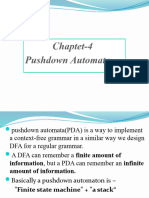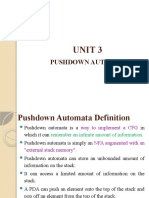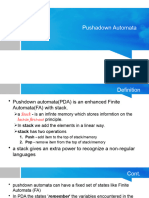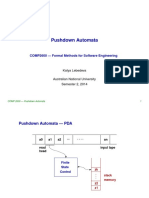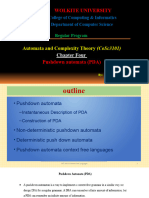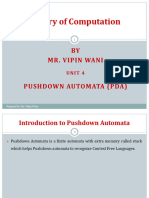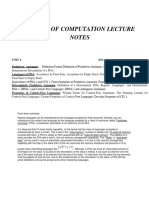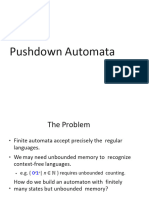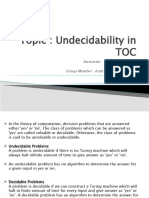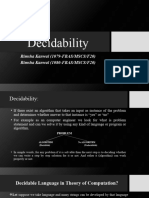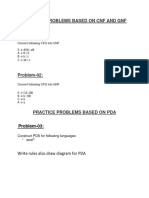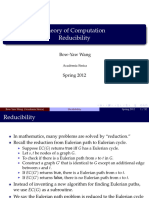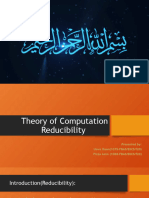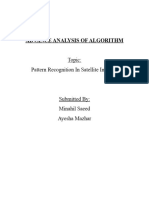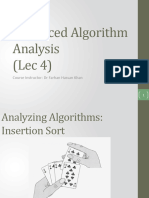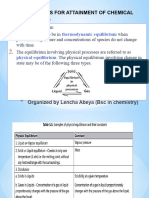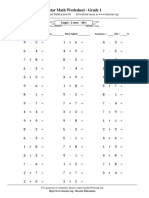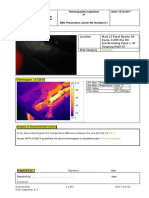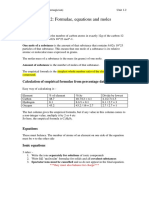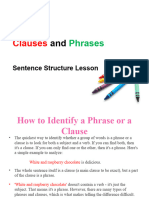0% found this document useful (0 votes)
118 views22 pagesPDA-6 Tuple Machine
(1) Pushdown automata (PDA) extend finite automata with a stack, allowing them to count and remember inputs in a limited way. (2) Formally, a PDA is defined as a 6-tuple including states, inputs, stack symbols, and transitions. (3) PDA can recognize languages like {anbn} that finite automata cannot, but are less powerful than Turing machines.
Uploaded by
Sinan AhmedCopyright
© © All Rights Reserved
We take content rights seriously. If you suspect this is your content, claim it here.
Available Formats
Download as PDF, TXT or read online on Scribd
0% found this document useful (0 votes)
118 views22 pagesPDA-6 Tuple Machine
(1) Pushdown automata (PDA) extend finite automata with a stack, allowing them to count and remember inputs in a limited way. (2) Formally, a PDA is defined as a 6-tuple including states, inputs, stack symbols, and transitions. (3) PDA can recognize languages like {anbn} that finite automata cannot, but are less powerful than Turing machines.
Uploaded by
Sinan AhmedCopyright
© © All Rights Reserved
We take content rights seriously. If you suspect this is your content, claim it here.
Available Formats
Download as PDF, TXT or read online on Scribd
/ 22








